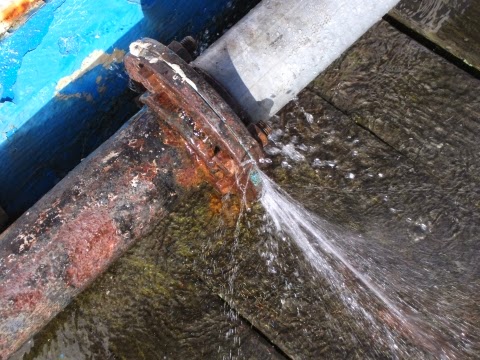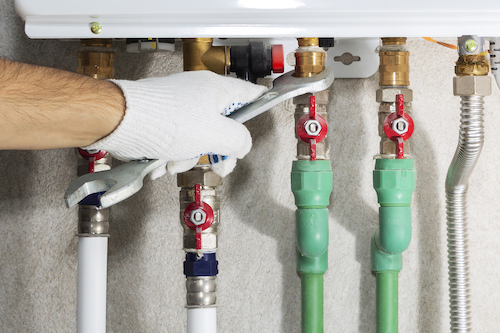Quick-Response Plumbing: Tips for Identifying and also Repairing Burst Pipes
Quick-Response Plumbing: Tips for Identifying and also Repairing Burst Pipes
Blog Article
Are you currently interested in guidance around How to Prepare for Your Dishwasher Installation?

A burst pipeline is a significant emergency; you can only stand as you enjoy water you pay dearly to reunite with the planet. In worse situations, you see a swimming pool on your kitchen flooring, which is a great trip threat, specifically if you have children around. If the pipe that burst remained in your wall surfaces, bad news: you may require to paint that entire area.
How can a catastrophe like a ruptured pipeline be prevented as well as handled? Well, by paying attention to your professional emergency plumbings as well as adhering to these regulations.
How do I understand when my pipes have burst?
Rising and fall water stress
Pipes do not simply burst in a day. You might have discovered that your kitchen area faucet or shower doesn't run right away when you transform the tap. It might stop briefly for a few seconds and afterwards blast you with more pressure than common.
In other circumstances, the water may seem regular at first, then decrease in stress after a few seconds.
Polluted water
Many individuals assume a ruptured pipe is a one-way electrical outlet. Fairly the contrary. As water drains of the hole or wound in your plumbing system, pollutants locate their way in.
Your water might be infected from the source, so if you can, check if your water container has any type of problems. Nonetheless, if your drinking water is supplied as well as purified by the local government, you must call your plumber instantly if you see or scent anything funny in your water.
Puddles under pipelines as well as sinks
When a pipeline ruptureds, the discharge forms a pool. It might appear that the puddle is expanding in size, and regardless of how many times you wipe the pool, in a few minutes, there's another one waiting to be cleansed. Commonly, you might not be able to trace the pool to any type of visible pipes. This is an indicator to call a specialist plumber.
Wet wall surfaces and also water discolorations
Before a pipe ruptureds, it will certainly leak, most times. If this relentless dripping goes undetected, the leakage may graduate into a vast tear in your pipeline. One simple way to avoid this emergency is to keep an eye out for damp wall surfaces ad water discolorations. These water stains will certainly lead you right to the leakage.
Untraceable dripping sounds
Pipeline bursts can happen in one of the most undesirable locations, like within concrete, inside walls, or under sinks. When your house goes quiet, you may be able to listen to an aggravatingly relentless leaking noise. Even after you've examined your shower head and also cooking area tap, the dripping might proceed.
Dear reader, the trickling may be coming from a pipeline inside your walls. There isn't much you can do concerning that, other than inform a professional plumber.
Turn up the Heat
Establish followers to blow warm into cold areas. Maintain the garage door shut. If you have minimized water circulation, warm one of the most susceptible pipes (usually in cellars as well as crawl spaces or near outside walls) with a hair dryer. Leave the tap on while you apply heat. As you thaw ice, the circulation will raise. To stop pipes from freezing, shield your walls.
Begin Eliminating the Water
Order the wipe, buckets and also a store vacuum to begin to eliminate the water due to the fact that you definitely do not want it saturating into whatever else in the house. And also, a quick clean up will certainly decrease the opportunities of something getting musty.
What do I do when I find a ruptured pipe?
Your water meter will continue to run even while your water wastes. To decrease your losses, find the primary controls and turn the supply off. The water pipe are an above-ground structure at the edge of your building.
How to Fix & Detect a Leaking Pipe
How Do I Know if a Pipe is Leaking?
Leak detection tests can help you determine if your pipe has a leak. Even if you don’t see an apparent leak, you should still conduct leak detection tests regularly to save water and money—and prevent major damage to your home.
Water meter. It can be helpful to figure out what your usual water meter usage numbers are and then monitor them regularly. To monitor your meter, first, turn off all water faucets in your home. Check the meter and write down the numbers. In a few hours, check the meter again. If the numbers have changed, you have a leak. Water gauge. Use a water gauge to test your water pressure. Your showerhead should produce a certain amount of water pressure based on its model and design. If the pressure is lower than it is supposed to be for that specific showerhead, your home likely has a leak. Puddles. Look inside your bathroom, laundry, and kitchen sink cabinets. Puddles around the cabinets or around toilets, tubs, showers, and washing machines indicate the presence of a leaking pipe. You may also notice loose tiles, peeling or flaking paint, or mold caused by water accumulation. Napkin test. Even if you don’t see any puddles, you may still have a leak. You can test for water leaks in the bathroom, laundry, and kitchen by wiping below-sink connections with a napkin, paper towel, or piece of toilet paper. If it becomes damp, you probably have a leaking pipe under the sink. Discolored walls. Walls that are discolored—usually with brown or yellow stains—or bulging might mean that they have been impacted by water damage caused by a leaking pipe. Smell. A leaky pipe will create sitting water, and over time, that water may develop a musty smell. If your home smells musty, but you can’t locate the source, it may be due to a leak. Steps for Fixing a Leaking Pipe
A leaky drain can be remedied by tightening the pipe base, replacing the drain seal, caulking the rim, and tightening the pipe nut. Similarly, a leaking toilet pipe can be treated by tightening the packing nut. You may also need to replace the valve. A leaky faucet may just need tightening or replacement of the washers. If that doesn’t work, consider replacing your faucet. If your pipe has a hole in it, you may want to use a pipe leak sealer or pipe leak tape. This quick fix for water pipe leaks can also temporarily fix a copper pipe leak. https://www.ahs.com/home-matters/quick-tips/how-to-tell-if-pipes-are-leaking/

Hopefully you enjoyed our article on How to Install and Connect a New Dishwasher. Thanks a lot for spending some time to read through our blog post. Sharing is good. You won't know, you may be doing someone a favor. Thank you for your time invested reading it.
Free Quote
Report this page